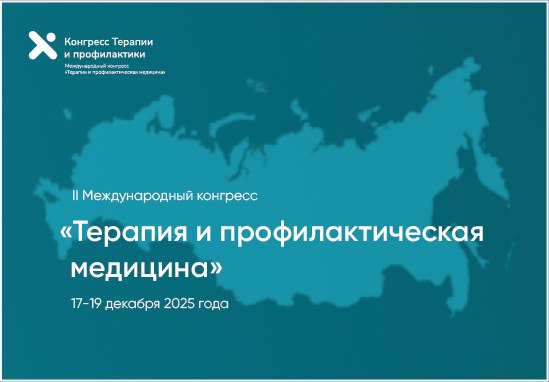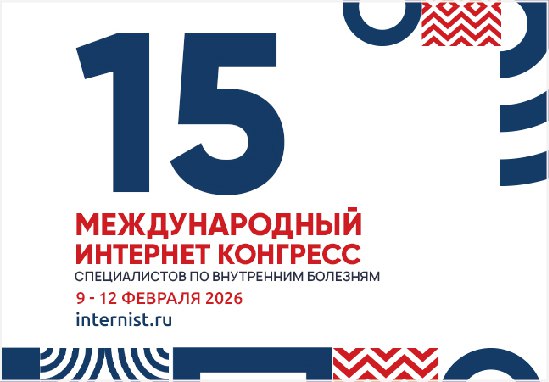Common carotid intima-media thickness and vascular stiffness in young adults taking into account body mass index
https://doi.org/10.15829/1728-8800-2025-4320
EDN: QSCCYL
Abstract
Aim. To assess the influence of body mass index (BMI) in young people on the carotid intima-media thickness (IMT), cardio-ankle vascular index (CAVI), ankle-brachial index (ABI) and some cardiovascular risk factors.
Material and methods. The study included 171 young people (75 males and 96 females) aged 18-25 years. All subjects were divided into 3 following groups depending on their BMI level: group 1 — underweight, group 2 — normal weight, group 3 — overweight and obesity. In these groups, we determined the common carotid IMT using the RuScan 70P ultrasound system (NPO Scanner, Russia), the CAVI and ABI values using the Vasera VS-1500 system (Fukuda Denshi, Japan), as well as blood pressure (BP) and main cardiovascular risk factors.
Results. An association between BMI and left carotid IMT was revealed both among young men and among young women (ANOVA, p=0,023 and p1-2=0,049). The ABI on the left (ANOVA, p=0,006) and CAVI (ANOVA, p=0,001 on the right and p=0,001 on the left) in young women were significantly higher in the 1st group compared to the 2nd and 3rd groups. The highest systolic BP is observed in the overweight and obesity group compared to the normal and underweight groups both among young men (p1-3=0,002 and p2-3=0,015 on the right and p1-3=0,002 and p2-3=0,009 on the left) and among young women (p1-3=0,024 and p2-3=0,023 on the left and p1-2=0,032, p1-3=0,003 and p2-3=0,042 on the right), respectively.
Conclusion. Early vascular remodeling in young people associated with overweight and obesity is characterized by higher IMT values in combination with physiological adaptation of large arterial media in the form of lower arterial stiffness in response to the training effect of overweight/obesity in this age period.
About the Authors
M. E. EvsevievaRussian Federation
Stavropol
O. V. Sergeeva
Russian Federation
Stavropol
M. V. Eremin
Russian Federation
Stavropol
A. V. Guseva
Russian Federation
Stavropol
M. V. Rostovtseva
Russian Federation
Stavropol
E. M. Zvyagintseva
Russian Federation
Stavropol
A. V. Rusidi
Russian Federation
Stavropol
E. N. Fursova
Russian Federation
Stavropol
References
1. Kakorina EP, Samorodskaya IV, Martsevich SYu. Topical issues of myocardial infarction incidence statistics. Russian Journal of Cardiology. 2024;29(9):5928. (In Russ.) doi:10.15829/1560-4071-2024-5928.
2. Shlyakhto EV, Zvartau NE, Villevalde SV, et al. Cardiovascular risk management system: prerequisites for developing, organization principles, target groups. Russian Journal of Cardiology. 2019; (11):69-82. (In Russ.) doi:10.15829/1560-4071-2019-11-69-82.
3. Larina VN, Mkrtychev DS, Kuznetsova VA, et al. Possible Approaches to Primary Prevention of Cardiovascular Diseases. Rational Pharmacotherapy in Cardiology. 2020;16(5):831-41. (In Russ.) doi:10.20996/1819-6446-2020-10-12.
4. Chiesa ST, Charakida M, Georgiopoulos G, et al. Determinants of Intima-Media Thickness in the Young: The ALSPAC Study. JACC Cardiovasc Imaging. 2021;14(2):468-78. doi:10.1016/j.jcmg.2019.08.026.
5. Bhakta N, Liu Q, Yeo F, et al. Cumulative burden of cardiovascular morbidity in paediatric, adolescent, and young adult survivors of Hodgkin's lymphoma: an analysis from the St Jude Lifetime Cohort Study. Lancet Oncol. 2016;17(9):1325-34. doi:10.1016/S1470-2045(16)30215-7.
6. Trifonova SS, Gaisenok OV, Sidorenko BA. Application of Methods of Assessment of Vascular Wall Stiffness in Clinical Practice: Capabilities of Cardio-Ankle Vascular Index. Kardiologiia. 2015; 55(4):61-6. (In Russ.) doi:10.18565/cardio.2015.4.61-66.
7. Evsevyeva ME, Sergeeva OV, Kudryavtseva VD, et al. EVA syndrome and hypertension in young people according to the work of the University Health Center of the StSMU. Arterial Hypertension. 2023;29(5):505-17. (In Russ.) doi:10.18705/1607-419X-2023-29-5-505-517.
8. Asghari G, Nikparast A, Mahdavi M, et al. Diagnostic performance of different anthropometric indices among Iranian adolescents for intima media thickness in early adulthood: A prospective study and literature review. Front Nutr. 2023;10:1098010. doi:10.3389/fnut.2023.1098010.
9. Yasuharu T, Setoh K, Kawaguchi T, et al. Nagahama study group. Brachial-ankle pulse wave velocity and cardio-ankle vascular index are associated with future cardiovascular events in a general population: The Nagahama Study. J Clin Hypertens (Greenwich). 2021;23(7):1390-8. doi:10.1111/jch.14294.
10. Evsevyeva MY, Eremin MV, Rostovtseva MV, et al. Preventive Screening of Young People from the Perspective of Vascular Aging Phenotypes: the Role of Body Weight. Rational Pharmacotherapy in Cardiology. 2022;18(1):42-8. (In Russ.) doi:10.20996/1819-6446-2022-02-14.
11. Razina AO, Achkasov EE, Runenko SD. Obesity: the modern approach to the problem. Obesity and metabolism. 2016;13(1):3- 8. (In Russ.) doi:10.14341/omet201613-8.
12. Burenkov YuV, Shevtsova VI, Krasnorutskaya ON, et al. Predictors of a metabolically unhealthy obesity. Cardiovascular Therapy and Prevention. 2025;24(2):4212. (In Russ.) doi:10.15829/1728-8800-2025-4212.
13. Vinter DA, Mustafina SV, Rymar OD, et al. Behavioral and social risk factors for metabolically unhealthy obesity: data form a 12-year prospective study in the Russian population. Russian Journal of Cardiology. 2022;27(5):4997. (In Russ.) doi:10.15829/1560-4071-2022-4997.
14. Golubnitschaja O. Flammer Syndrome in the Global Context — The "U-Shape" of Health Risks. In: Golubnitschaja O., ed. Flammer Syndrome: From Phenotype to Associated Pathologies, Prediction, Prevention and Personalisation. Advances in Predictive, Preventive and Personalised Medicine. Switzerland: Springer Nature AG; 2019:1-8. ISBN: 978-3-030-13550-8.
15. Bhaskaran K, Dos-Santos-Silva I, Leon D, et al. Association of BMI with overall and cause-specific mortality: a populationbased cohort study of 3•6 million adults in the UK. Lancet Diabetes Endocrinol. 2018;6(12):944-53. doi:10.1016/S2213-8587(18)30288-2.
16. Kobalava ZhD, Konradi AO, Nedogoda SV, et al. 2024 Clinical practice guidelines for Hypertension in adults. Russian Journal of Cardiology. 2024;29(9):6117. (In Russ.) doi:10.15829/1560-4071-2024-6117.
17. Fernández-Alvarez V, Linares Sánchez M, López Alvarez F, et al. Evaluation of Intima-Media Thickness and Arterial Stiffness as Early Ultrasound Biomarkers of Carotid Artery Atherosclerosis. CardiolTher. 2022;11(2):231-47. doi:10.1007/s40119-022-00261-x.
18. Averkin NS, Fedorova MG, Latynova IV, et al. The relationship between the individual morphometric parameters of the arterial wall and their dependence on age. News of higher educational institutions. The Volga region. Medical sciences. 2020;2(54):99- 108. (In Russ.) doi:10.21685/2072-3032-2020-2-10.
19. Mitchell GF, Hwang SJ, Vasan RS, et al. Arterial stiffness and cardiovascular events: the Framingham Heart Study. Circulation. 2010;121(4):505-11. doi:10.1161/CIRCULATIONAHA.109.886655.
20. Eikås JG, Gerdts E, Halland H, et al. Arterial Stiffness in Overweight and Obesity: Association with Sex, Age, and Blood Pressure. High Blood Press Cardiovasc Prev. 2023;30(5):435-43. doi:10.1007/s40292-023-00593-2.
21. Evans JT, Buscot MJ, Fraser BJ, et al. Life-period associations of body mass index with adult carotid intima-media thickness: The Bogalusa Heart Study and the Cardiovascular Risk in Young Finns Study. Prev Med. 2024;189:108128. doi:10.1016/j.ypmed.2024.108128.
22. Kiechl SJ, Staudt A, Stock K, et al. Early Vascular Ageing (EVA) Study Group. Predictors of Carotid Intima-Media Thickness Progression in Adolescents-The EVA-Tyrol Study. J Am Heart Assoc. 2021;10(18):e020233. doi:10.1161/JAHA.120.020233.
23. Büschges J, Schaffrath Rosario A, Schienkiewitz A, et al. Vascular aging in the young: New carotid stiffness centiles and association with general and abdominal obesity — The KIGGS cohort. Atherosclerosis. 2022;355:60-7. doi:10.1016/j.atherosclerosis.2022.05.003.
24. Evsevieva ME, Sergeeva OV, Rusidi AV, et al. Youth obesity paradox from the perspective of vascular stiffness, blood pressure and metabolic status. Russian Journal of Cardiology. 2024;29(5):5739. (In Russ.) doi:10.15829/1560-4071-2024-5739.
25. Evsevyeva ME, Eremin MV, Rostovtseva MV, et al. Vascular aging phenotypes based on VaSerа-screening results in young people with hypertension: Place of connective tissue dysplasia. Arterial Hypertension. 2021;27(2):188-205. (In Russ.) doi:10.18705/1607-419X-2021-27-2-188-205.
26. Zaikina MP, Kapustina VA, Savel'ev SI. Obesity paradox in patients with cardiovascular diseases and diabetes mellitus type 2 (analytical review). Health care of the Russian Federation. 2021;65(2):135-42. (In Russ.) doi:10.47470/0044-197X-2021-65-2-135-142.
27. Charakida M, Jones A, Falaschetti E, et al. Childhood obesity and vascular phenotypes: a population study. J Am Coll Cardiol. 2012;60(25):2643-50. doi:10.1016/j.jacc.2012.08.1017.
28. Meng Y, Sharman JE, Koskinen JS, et al. Blood Pressure at Different Life Stages Over the Early Life Course and Intima-Media Thickness. JAMA Pediatr. 2024;178(2):133-41. doi:10.1001/jamapediatrics.2023.5351.
Supplementary files
What is already known about the subject?
- Increased common carotid intima-media thickness and vascular stiffness have a predictive potential for various cardiovascular events.
What might this study add?
- In young adults with overweight and obesity, compared to their normal-weight peers, blood pressure and common carotid intima-media thickness are increased, but the level of vascular stiffness is reduced.
- Among young people with overweight and obesity, there are multidirectional changes of large arteries.
- The existing medical examination system for young people should be optimized in terms of wider and earlier implementation of comprehensive angiology screening.
Review
For citations:
Evsevieva M.E., Sergeeva O.V., Eremin M.V., Guseva A.V., Rostovtseva M.V., Zvyagintseva E.M., Rusidi A.V., Fursova E.N. Common carotid intima-media thickness and vascular stiffness in young adults taking into account body mass index. Cardiovascular Therapy and Prevention. 2025;24(8):4320. (In Russ.) https://doi.org/10.15829/1728-8800-2025-4320. EDN: QSCCYL

























































